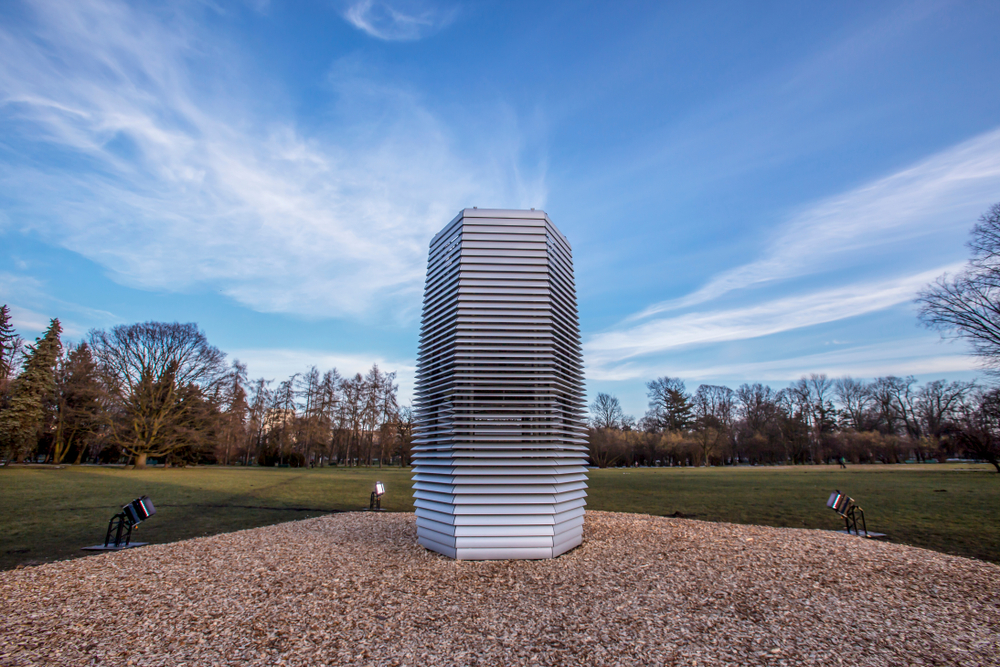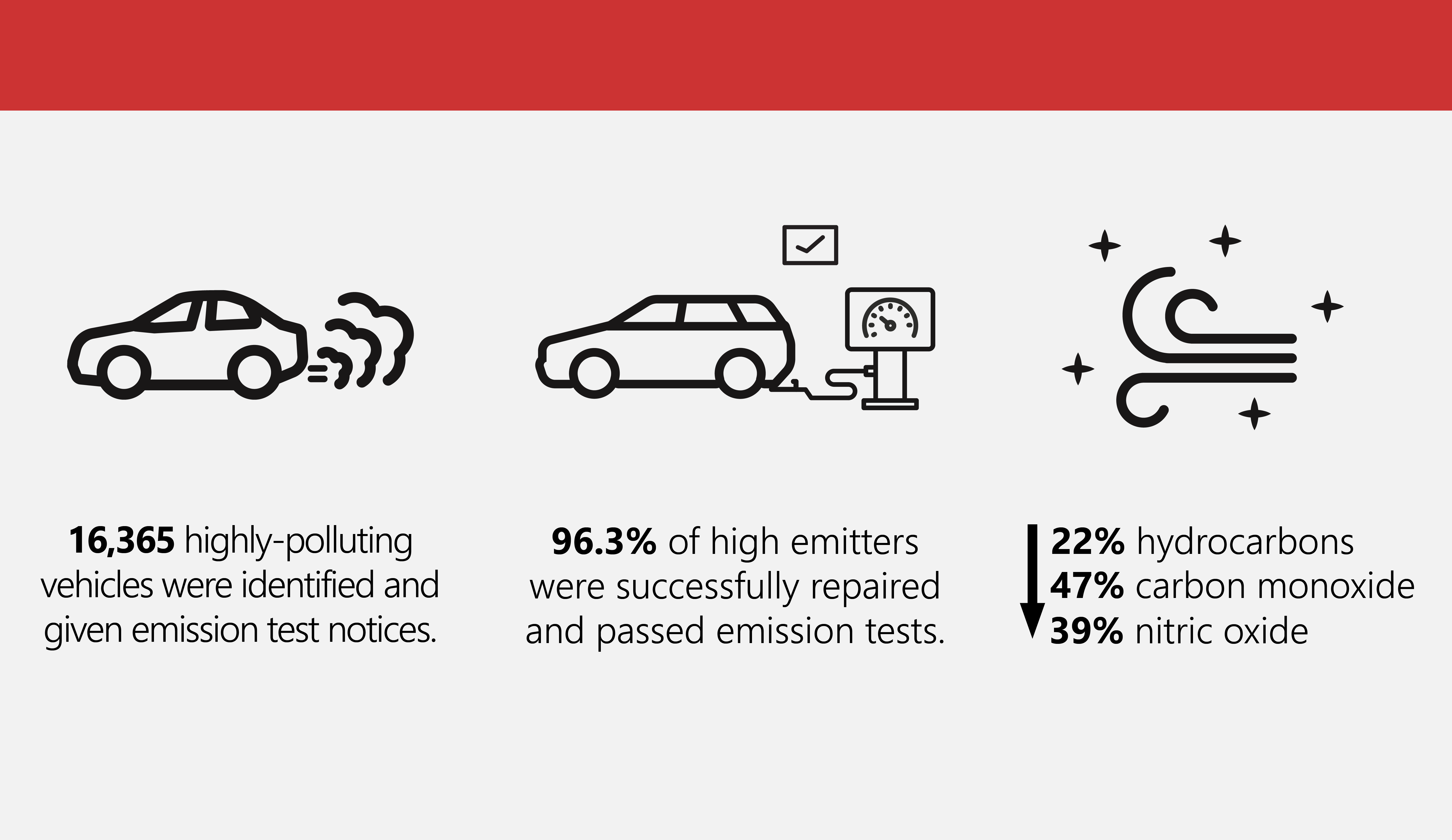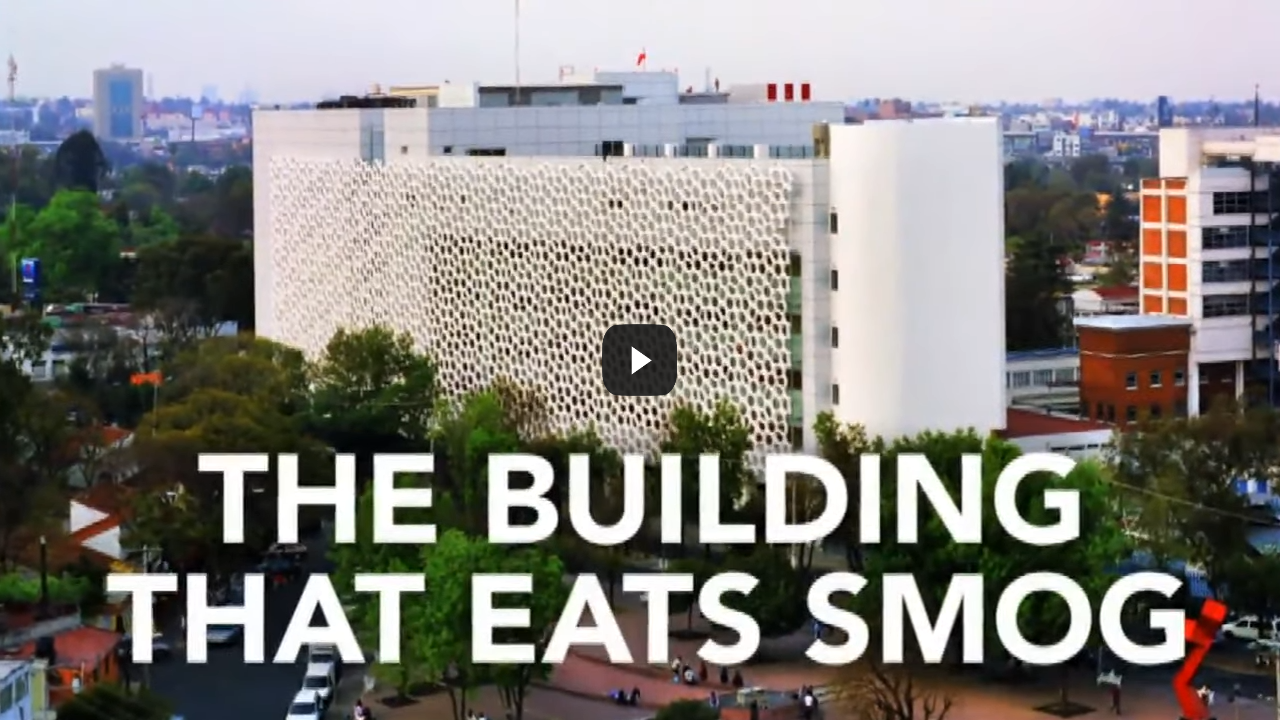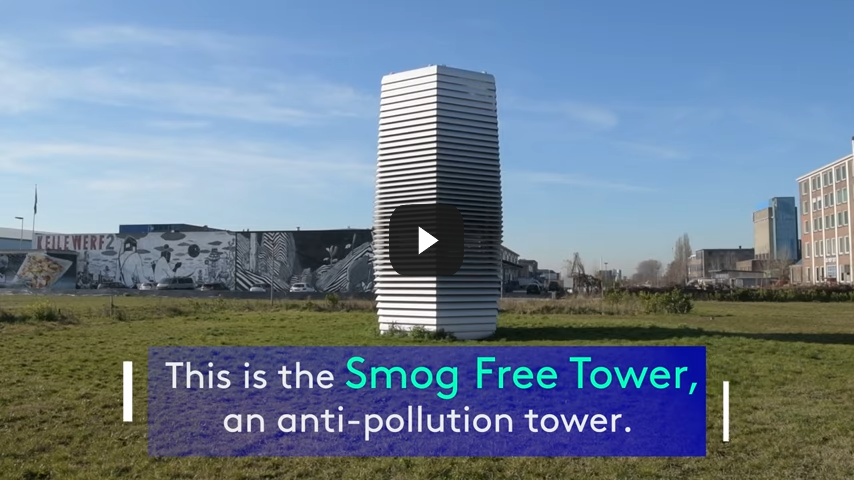Machines Join Fight for Cleaner Air

From robots to sensors to architecture, see how experts are fighting to make the air cleaner for our planet and people.
Death is in the air. Air pollution is the most hazardous environmental risk to human health, taking the lives of nearly seven million people annually.
Sources of air pollution include emissions from vehicles, industrial plants, the agricultural industry, and fires. Gases such as carbon monoxide, sulfur dioxide, and nitrogen oxides lead to deaths caused by heart disease, lung cancer, stroke, chronic obstructive pulmonary disease, and acute respiratory infections.
In this article, we take a look at the different innovations by engineers, architects, and researchers that monitor and evaluate air pollution.
Remote sensing technology for vehicle pollution
Vehicles that are older or less well-maintained have significantly higher emission levels. In the streets of Hong Kong, remote sensing equipment composed of a sensor and a light beam is used to spot high-polluting vehicles. As a vehicle drives past the equipment, the sensors measure the chemical concentrations in the exhaust. A camera then records the vehicle’s license plate so it can be identified for inspection and repair.
The Hong Kong Environmental Protection Department (HKEPD) and the Hong Kong Vocational Training Council have partnered with researchers from the University of Technology Sydney (UTS) to determine the effectiveness and accuracy of the city’s remote sensing enforcement program.
According to a study published in the journal Science Advances, the team analyzed program data from September 2014 to December 2018 that was gathered from around 2.9 million vehicles from more than 150 monitoring sites. The researchers also examined air quality monitoring and chassis dynamometer testing data.
Thanks to the city’s remote sensing enforcement program, 96.3% of the highly-polluting vehicles were repaired and successfully passed the Hong Kong Transient Emission Test (HKTET). The identification and subsequent repair of these highly-polluting vehicles led to significant wins for cleaner air.

Clearly, a remote sensing enforcement program combined with stringent emission testing can significantly reduce urban air pollution from vehicles.
"This is the first study of its kind to link on-site measurement of vehicle emissions with follow-up actions for repair of the high polluting vehicles. It provides insights for policymakers not just on monitoring but also implementing enforcement programs," first author Yuhan Huang shared.
"Targeting the small portion of high emitters for vehicle emission control significantly reduces the repair cost and time for both the government and vehicle owners, compared to passive sampling or periodic inspection," he continued.
(Also read: Climate Technology:Time for a Cool Change)
Real-time air quality monitoring
Air quality from one street to another can vary significantly. Before government officials can improve their city’s air quality, they need to identify specific problem areas. To accomplish this, they need precise pollution mapping.
Researchers at Graphene Flagship, a Future and Emerging Technology (FET) Flagship by the European Commission, have partnered with scientists from universities in Sweden and the United Kingdom to develop small, cost-effective, and low-energy sensors that can detect nitrogen dioxide in real time.
The sensors have a layer of graphene. When they absorb nitrogen dioxide (NO2) from the air, the NO2 molecules attach to the graphene’s surface and produce a recordable signal. These graphene-based sensors can detect even very low concentrations of nitrogen dioxide.
“We achieved 10 ppb sensitivity for nitrogen dioxide, which is extremely low and really desirable for environmental monitoring,” Chris Melios of the National Physical Laboratory and the Advanced Institute of Technology in the UK shared.
“We also measured it in different environments – we tried to mimic the ambiance, so we varied the humidity and temperatures, and also mixed different gases – so we could confirm that the sensor works in a real environment,” Melios continued.
Placed on street signs and lamp posts, a network of these small, affordable, and effective sensors could provide a real-time map of air quality across a city. With this information, city officials can make appropriate decisions for highly-polluted areas.
"If you can measure NO2 pollution accurately, you can produce explicit, temporary laws for specific areas, instead of covering entire cities," said Melios.
(Also read: 6 Tips for a Smaller Transportation Footprint)
Robots to our rescue
When we talk about air pollution, our thoughts automatically turn to the black smoke belching out of vehicles. But motor emissions are not the only sources of air pollution. Plastic that is littering–and breaking down–in our oceans is a significant contributor to air pollution. These toxic microplastics and nanoplastics are also being ingested by birds and marine life.
BeBot, the brainchild of collaborators Poralu Marine and 4ocean, has come to the rescue. The battery- and solar-powered robot can detect and remove microplastics invisible to the human eye.
“It’s remote-controlled and it utilizes a sand-sifting mechanism to go over the top surface of the sand — a vibrating screen that then filters out the sand below, the plastic and debris is then lifted up into the hopper behind it,” shared Alex Schulze, co-founder of 4ocean.
It can pick up trash as small as one square centimeter and shift through sand up to ten centimeters deep to prevent erosion. Depending on the topography of the beach, BeBot can clean up to 3,000 square meters of beach in one hour–the size of seven basketball courts.
(Also read: How Robots Help the Food Industry Grow)
Buildings that fight air pollution
In the early 2000s, Mexico City was notorious for being the world’s most polluted city. Allison Dring, a Berlin-based architect and director of Elegant Embellishments, found a solution in building design and materials.
The result is the Hospital Manuel Gea Gonzalez in southern Mexico City. To remove nitrogen dioxide emitted from vehicle exhausts, Dring covered the exterior of the building with photocatalytic titanium dioxide. This metal oxide uses the sun’s UV rays to convert nitrogen dioxide into nitric acid, which is then neutralized into salt and washed away by the rain. The design of the building facade was inspired by corals, which enables it to catch light and wind from all directions. At 2,500 square meters, the building reduces street pollution equivalent to around 1,000 cars per day.
In 2015, Dutch innovator and artist Professor Daan Roosegaarde launched a Kickstarter campaign for his Smog Free Tower. Like a giant outdoor air purifier, the Smog Free Tower uses patented ionization technology that produces smog-free air. At seven meters tall, the Smog Free Tower cleans 30,000 cubic meters of air every hour while using only a small amount of green electricity.
Roosegaarde's Smog Free Tower has been erected in the Netherlands, China, South Korea, and Poland.
In a 2019 interview for Freethink, Roosegaarde shared how the Dutch word Schoonheid informs his design philosophy.
“Schoonheid is a typical Dutch word which has two meanings: ‘cleanliness’ as in clean air, clean water, clean energy, and clean space but it also means ‘beautiful’ as in sublime aesthetics and creativity,” Roosegaarde explained. “For us, Schoonheid shines light on both dimensions and calls for its recognition as a fundamental condition in urban environments. We are all makers, not consumers. We should be part of the solution, instead of the problem.”
(Also read: Smart Buildings Around the World)
As one of the Top 19 EMS companies in the world, IMI has over 40 years of experience in providing electronics manufacturing and technology solutions.
We are ready to support your business on a global scale.
Our proven technical expertise, worldwide reach, and vast experience in high-growth and emerging markets make us the ideal global manufacturing solutions partner.
Let's work together to build our future today.





